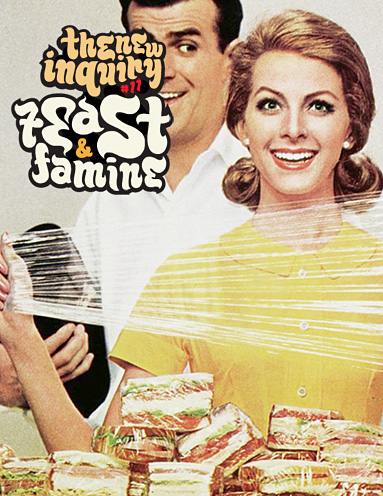This is the editorial note to TNI Vol. 11: Feast & Famine. View the full table of contents here.
Subscribe to TNI for $2 and get Feast & Famine (and free access to our archive of back issues) today.
***
“A feast is made for laughter, and wine makes life merry, but money is the answer for everything,” says Ecclesiastes 10:19. That’s a surprise, considering the Bible’s other words on coin, but then again its dietary advice isn’t self-consistent either. Food often isn’t. Fruit ripens through rot, and feast invokes famine. For all the lavishness and delicacy of food culture, every meal has the same end. And money is still the answer for everything.
Food writing dilates on the edible, of course. An entire segment of the publishing industry is devoted to the various ways we configure calories before they pass through our stomachs: on dishes, at restaurants, in the hands of chef-auteurs. Some of these banquet speeches complement the meal; others, in their glazed-eyed obsession with the aliment in front of them, speak with food in their mouths. Still more rush to man barricades in the 21st century diet wars with claims not just to knowledge but goodness of palate and heart.
We thought we would look at the other side of this food issue. In these articles, food doesn’t sit on a plate or tongue for long. We’re more interested in its circulation through geography, markets, and bodies—racialized, classed, and gendered. This volume of The New Inquiry Magazine looks at feast and famine as concepts that coordinate bodies within the social metabolism.
The issue begins by arguing with taste, with reviews of fruits and vegetables on their own merits. In Charlotte Shane’s “Wrong Way to Eat,” binging and purging are rehabilitated to an extent, as pathologized versions of excess and ascesis that aren’t questioned when religions (or men) do them. Karla Cornejo Villavicencio tracks the red stain of food dyes along the timberline of the ghetto, a territory that is neither food desert nor nameless gastrobiome. Peter Frase wheels around to investigate intellectual property’s new place at the table, and Willoughby Cooke fills in what “farm-to-table” elides: the kitchen and the people who work there. Christine Baumgarthuber tells the story of Juliet Corson, a 19th century American home economist, who some thought “did more good than all the anarchists, unionists and socialists’ propaganda combined.” Elliot Ross looks at the evolution of advertising used to sell hunger and U2 to buyers who are already full. And Adam Rothstein interviews food geographer Nicola Twilley on counterfeit ketchup and the infrastructure of refrigeration.
Food connects individual bodies to the circuits of production, but that linkage is never clean or even. Eating is messy, storage is messy, distribution is messy, planting is messy, and none of them is especially appetizing if you look too close. Unlike the food writers who always seem to commit the literary version of going to the grocery store hungry, we’re trying to see the movement of calories with fresh eyes.

